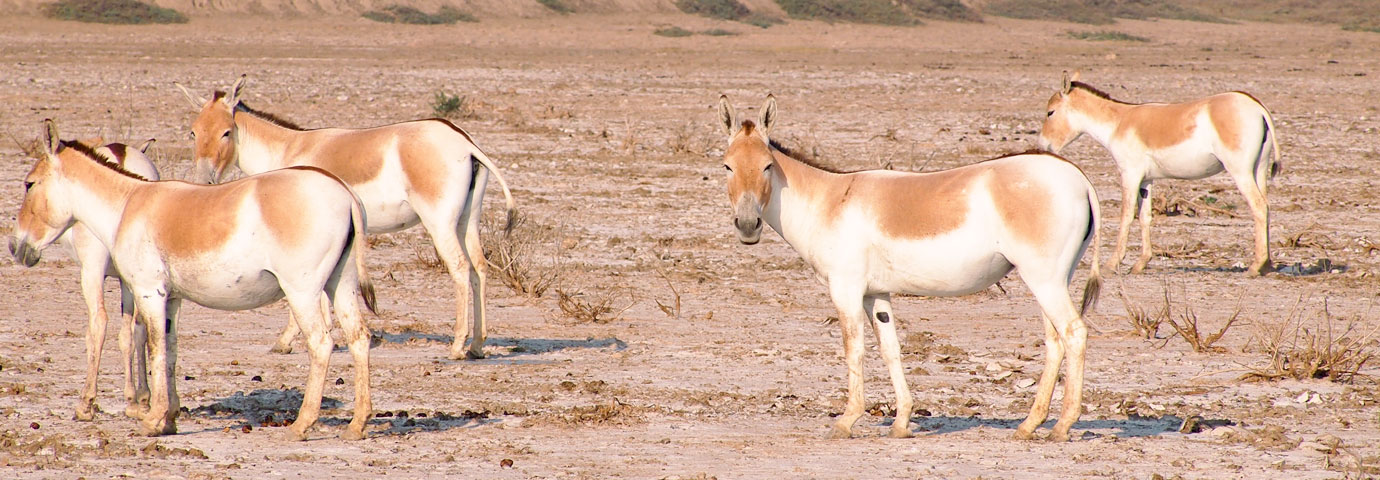Gujarat’s Wild Ass population grows by 26% in 5 years, reaching 7,672
October 07, 2024
Gandhinagar: Highlighting the unique presence of wild asses in Gujarat as a source of pride for the entire state, Forest and Environment Minister Mulubhai Bera shared the historical range of these animals, which once extended from northwest India and Pakistan to the arid regions of Central Asia. Today, however, they are primarily found in the deserts of Kutch, Gujarat. The Gujarat government’s efforts, combined with numerous awareness campaigns, have led to a significant rise in the wild ass population, which now stands at 7,672—an increase of approximately 26.14%. This achievement coincides with ‘Wildlife Conservation Week,’ celebrated across India, including Gujarat, from October 2nd to 8th, marking a proud moment in the state’s wildlife conservation journey.
Minister Mulubhai Bera informed that the wild ass population is assessed every five years the state’s Forest and Environment Department conducted its 10th wild ass population survey this year, estimating the total population to be around 7,672. This reflects a significant increase from the previous count of 6,082. Globally, these wild asses are recognized as Equus hemionus khur and are locally known as “Khur.”
In detailing the findings of the wild ass survey, Forest Minister noted that these animals are primarily found in six districts of the state. According to the latest survey, the highest number of wild asses, 2,705, resides in Surendranagar district. Additionally, the survey recorded 1,993 wild asses in Kutch district, 1,615 in Patan, 710 in Banaskantha, 642 in Morbi, and 7 in Ahmedabad district. In terms of forest regions, Dhrangadhra reported the highest population with 3,234 wild asses, followed by 2,325 in Radhanpur and 2,113 in Bhachau.
Furthermore, in these forest and sanctuary areas, there are 2,569 female wild asses, 1,114 male wild asses, 584 baby wild asses, and 2,206 unclassified wild asses. In the revenue areas, there are 558 female wild asses, 190 male wild asses, 168 baby wild asses, and 283 unclassified wild asses. Thus, combining both areas, the total wild ass population in the state is recorded at 7,672 the Minister added.
Minister of State for Forest and Environment, Mukesh Patel, announced that the wild ass population survey, part of WAPE-2024, was conducted over an area of approximately 15,510 sq km using the direct count method. In 2024, in addition to wild asses, various other wildlife species were also counted, including Asian antelope, Indian gazelle, Blackbuck, Wild Boar, Indian Jackal, and Indian Desert Fox. The survey recorded the highest populations of 2,734 Asian antelope, 915 wild boars, 222 Indian hares, 214 Indian gazelle, and 153 Indian Jackal
The Minister of State stated that the direct count method was used for estimating the wild ass population in an area of approximately 15,510 square kilometres in WAPE-2024. In 2024, alongside the wild ass, the count of other forest animals was also conducted. This included the Nilgai, chinkara, wild boar, Indian fox, and desert fox. The results showed 2,734 Nilgai, 915 wild boars, 222 Indian Rabbit, 214 chinkaras, and 153 Indian foxes.
Here is the table with the details of other wildlife associated with the wild ass:
| Species | Number |
|---|---|
| Asian antelope | 2,734 |
| Wild boar | 915 |
| Indian Hare | 222 |
| Indian gazelle | 214 |
| Indian Jackal | 153 |
| Desert Fox | 70 |
| Indian Fox | 49 |
| Blackbuck | 39 |
| Striped Hyena | 15 |
| Desert cat | 11 |
| Wild cat | 4 |
| Indian wolf | 2 |
Minister Mukesh Patel highlighted that as part of the WAPE-2024 initiative, special training camps were organized for census officers to enhance their ability to identify wild asses and other animals. Traditional methods were combined with modern technologies, including drone cameras, camera traps, and the e-Gujarat Forest module, to ensure accurate population tracking.
The Indian wild ass (Equus hemionus khur) possesses remarkable characteristics, such as its ability to survive in the extreme conditions of Gujarat’s Wild Ass Sanctuary, where temperatures often soar between 45 and 50 degrees Celsius. The primary food source for these animals is the grass that grows on the islands in the desert. Known for their strength, wild asses can run at speeds of 50 to 70 kilometres per hour in the desert. Despite their robust nature, they are typically shy and tend to flee at the sight of humans. Minister Shri Mukesh Patel emphasized that the responsibility of conserving these rare animals, the pride of Gujarat, rests not only with the government but with all citizens.
It is noteworthy that the Indian wild ass was classified as endangered by the International Union for Conservation of Nature (IUCN) in its 2008 report due to its limited population, and it is listed under Schedule I of the Wildlife Protection Act of 1972. Included in the IUCN’s Red List of Threatened Species, the wild ass has faced significant conservation challenges. In response, the Government of Gujarat has implemented several measures to protect and preserve this species, resulting in a steady increase in its population. Census data reflects this growth, with the population rising from 720 in 1976 to 1,989 in 1983, 2,072 in 1990, 2,839 in 1999, 4,451 in 2014, 6,082 in 2020, and 7,672 in 2024.
Recent Stories
- Gujarat ministers hold 4 group discussions in Chintan Shivir at Prabhas Patan
- Experts from Kochi visit Surat for feasibility survey of water metro along Tapi
- PM-Kisan beneficiaries in Gujarat shall register on AgriStack Farmer Registry by Nov 25
- News in Brief from across Gujarat
- Update on work in progress on Dahod-Gujarat-MP Border section of Delhi-Mumbai Expressway
- IAS officer Mona Khandhar appointed as Chairman of Gujarat Panchayat Service Selection Board
- It is a kind of moral science lesson: Gujarat HC on plea against Bhagavad Gita teaching in schools
